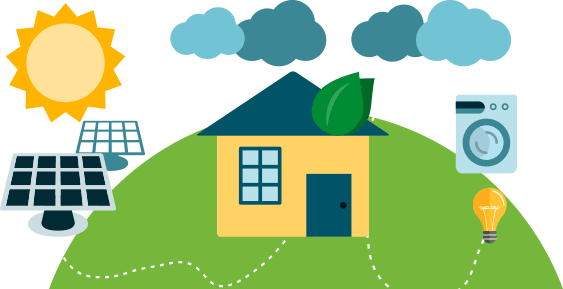

Has it Started Playing on Your Mind Too…?
You have seen it on TV, you have read about it in newspapers or magazines, you keep getting past it on numerous occasions on social media, you have seen on top of many big building as well as manufacturing facilities. It was all fine to know about it and see it happening at a distance. But when you saw it in your neighbourhood, it caught your attention and got you thinking whether you should get one for yourself or not...?
We are talking about rooftop solar installations. If you are also influenced by the buzz around solar power and curious to know about how to go about it, this will be an interesting read for you.
First & foremost, one needs to have a roof! Which means you need to own a house or have the rights to the roof of your building. The structure on which the panels are mounted needs a sturdy base for it to be erected properly. Even govt. won’t allow you put a solar power plant on top of your house till you prove that you own it.
The roof needs to be vacant for proper installation to take place. If you have any kind of structures, sculptures or plantation on the roof, than that area cannot be used for installing the solar panels. In such a case you will only be left with remaining area, if there is any, to work out the possibility of a solar plant on your roof.
Your location also plays a big factor in the ease with which you will be able to deploy a solar power plant in your home. Since we are talking about a lot a heavy equipment, the manoeuvrability of the luggage till your doorstep and then from there till your roof is also a factor you should watch out for. It should not be the case that you have a truck waiting with all of the equipment unable to enter your lane as it’s too narrow or labour unable to carry the equipment to your roof as there is no direct way to reach there. Any smooth execution requires planning and it needs to be done well in advance.
You should be very specific in knowing what your requirement is as it will determine what kind of solar solution you will opt for (yes, there are types) and of what size.
If you only are looking to reduce your electricity bill, then you should for on grid solar system, which transfers all the electricity generated by the panels directly to the grid. You will also need to get a “net meter” installed in this case as it will keep track of how much electricity you consumed and how much you fed back to the grid so that it can get reflected in your bill. The other type is called off grid where electricity being generated in stored in batteries. This is ideal for long power cut areas or where mains supply is not there.
The size of the system broadly depends on area available on the roof for solar installation, your load requirement and your budget! But there is more to it. Which is why its recommended to get the Site survey of your roof done by an expert who can not only assess the solarisation potential of your roof by doing proper shading analysis and can suggest the best solution after understanding your requirement and power scenario in your area. The best way to do it is to get in touch with a well-known brand which can own the entire process, as it’s a lengthy one, and lay back & relax.
It is also advisable to have a look at the solar policy in your state to know what all govt. benefits you can avail. It varies from state to state. The information is readily available on MNRE website.
Last but not the least, once you have get the solar rooftop system installed, always remember to clean the solar panels every week, if possible, to make sure that power generation is not affected by accumulation of dust.

